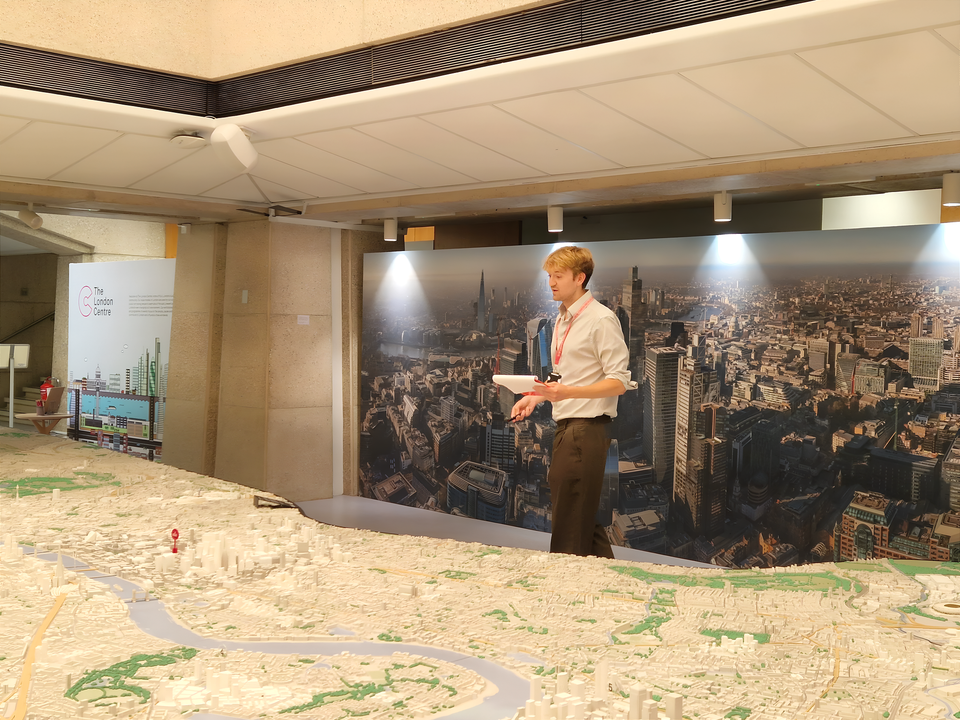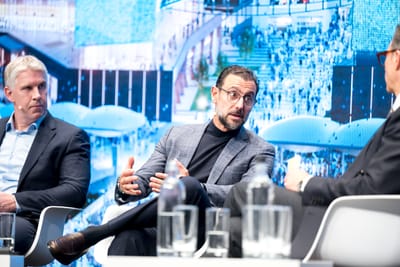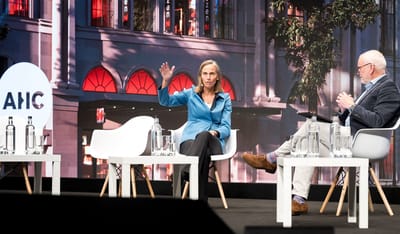
London isn’t growing randomly—it’s growing with intent. That was the key takeaway from the NLA’s Model Talk on July 11th, where planners, architects, and policymakers gathered around the New London Architecture’s 1:500 scale model to discuss the most ambitious spatial strategy underpinning the capital’s future: the 47 Opportunity Areas (OAs).
Presented by Inigo Jones, the talk offered a guided tour through London’s past, present, and future—explaining how planning policy and physical form intersect in real time.
Designated by the London Plan, these OAs represent London’s most significant engine for growth—strategic zones where new housing, infrastructure, and employment are expected to concentrate over the coming decades.
What Are Opportunity Areas?
At their core, Opportunity Areas are a policy mechanism designed to solve three urgent urban problems at once: the housing shortage, infrastructure lag, and economic clustering.
Defined by criteria such as:
- Proximity to existing or upcoming transport infrastructure (e.g. Crossrail, HS2, Overground upgrades),
- Availability of brownfield or underused land,
- Aging building stock ripe for intensification,
these areas are where London’s real estate opportunity and planning ambition align. The London Plan envisions these 47 zones delivering more than 650,000 new homes and 800,000 jobs over the next two decades.
Model Talk Highlights: Planning with a Purpose
Using the massive City model as a teaching tool, Inigo Jones narrated how the OAs are more than just marks on a map—they’re dynamic planning frameworks shaped by view corridors, density allowances, infrastructure spend, and socio-economic targets.
“Each one is a spatial story in motion. You can almost read the next decade of development from this table.”
A recurring theme was the interaction between heritage constraints (such as protected views of St Paul’s Cathedral) and high-rise ambitions, especially in the City core. But outside central London, in places like Colindale, Charlton Riverside, and Southall, the focus is on unlocking dormant land for high-density, mixed-use regeneration.
Inside the 47 Zones: Where the Real Growth Is
Here are just a few key OAs shaping London’s future:
- Old Oak and Park Royal
Anchored by the HS2/Elizabeth Line interchange, this OA is set to become a major West London hub. With 65,000 jobs and 25,000+ homes planned, it's a prime site for long-term institutional investment. - Canada Water
British Land’s £4bn regeneration here is turning a former retail and docklands area into a sustainable town centre, with residential, office, and cultural space embedded in walkable design. - Stratford and Lower Lea Valley
Building on the Olympic legacy, Stratford is becoming a nexus for life sciences, higher education, and build-to-rent schemes, with the East Bank cultural cluster as an anchor. - Thamesmead and Abbey Wood
Long overlooked, but with Crossrail now running, this OA offers waterfront development potential on a scale almost unseen elsewhere in London. - Euston
A compact but transformative zone, driven by HS2 station development, unlocking office-led density and active travel links into Camden.
Other zones—like Isle of Dogs, Greenwich Peninsula, and Croydon—have already seen early phases of transformation. But much of the real action is shifting towards outer London, as the search for scaleable land intensifies.
"We’re not just talking about plots anymore—we’re talking about entire new neighbourhoods,” Jones remarked, referencing large masterplans like Brent Cross South and Barking Riverside.
Policy Levers and Investment Potential
For investors and developers, Opportunity Areas offer:
- Higher density thresholds (with planning teams supportive of massing),
- Accelerated approvals via local frameworks and borough-wide design codes,
- Transport-led growth as a backbone of site viability,
- And in many cases, public-private partnerships or housing association involvement.
Opportunity Areas are also ESG-aligned by design. They prioritise:
- Net-zero development,
- Public and active transport over car usage,
- Affordable housing quotas, and
- Community infrastructure like schools and healthcare.
This makes them particularly attractive to institutional capital, impact funds, and forward-funding arrangements.
Risks and Realities
Not all Opportunity Areas are created equal. Jones acknowledged the execution risk in some zones—especially where land ownership is fragmented, or where governance bodies (like OPDC at Old Oak) face political or logistical gridlock.
“The Opportunity Areas are our best tools for guiding growth. But they only work if the delivery mechanisms are in place.”
There’s also the viability challenge. The requirement to deliver affordable housing at scale while building to high environmental standards can squeeze developer returns unless carefully managed. But the general consensus at the Model Talk was clear: Opportunity Areas are where the long-term gains are—especially for those who understand policy nuance.
Conclusion: A Strategic Map of the Future
The NLA Model Talk brought London’s development pipeline to life—literally. Through Inigo Jones’ expert narration and the visual reference of the city model, it became clear that London’s growth isn’t accidental. It’s being directed—spatially, politically, and economically—through tools like the 47 Opportunity Areas.
For professionals in real estate, finance, and urban development, these zones are London’s clearest signals of future value. They’re where housing policy meets capital markets, and where today’s planning becomes tomorrow’s opportunity.
Become a subscriber receive the latest updates in your inbox.






